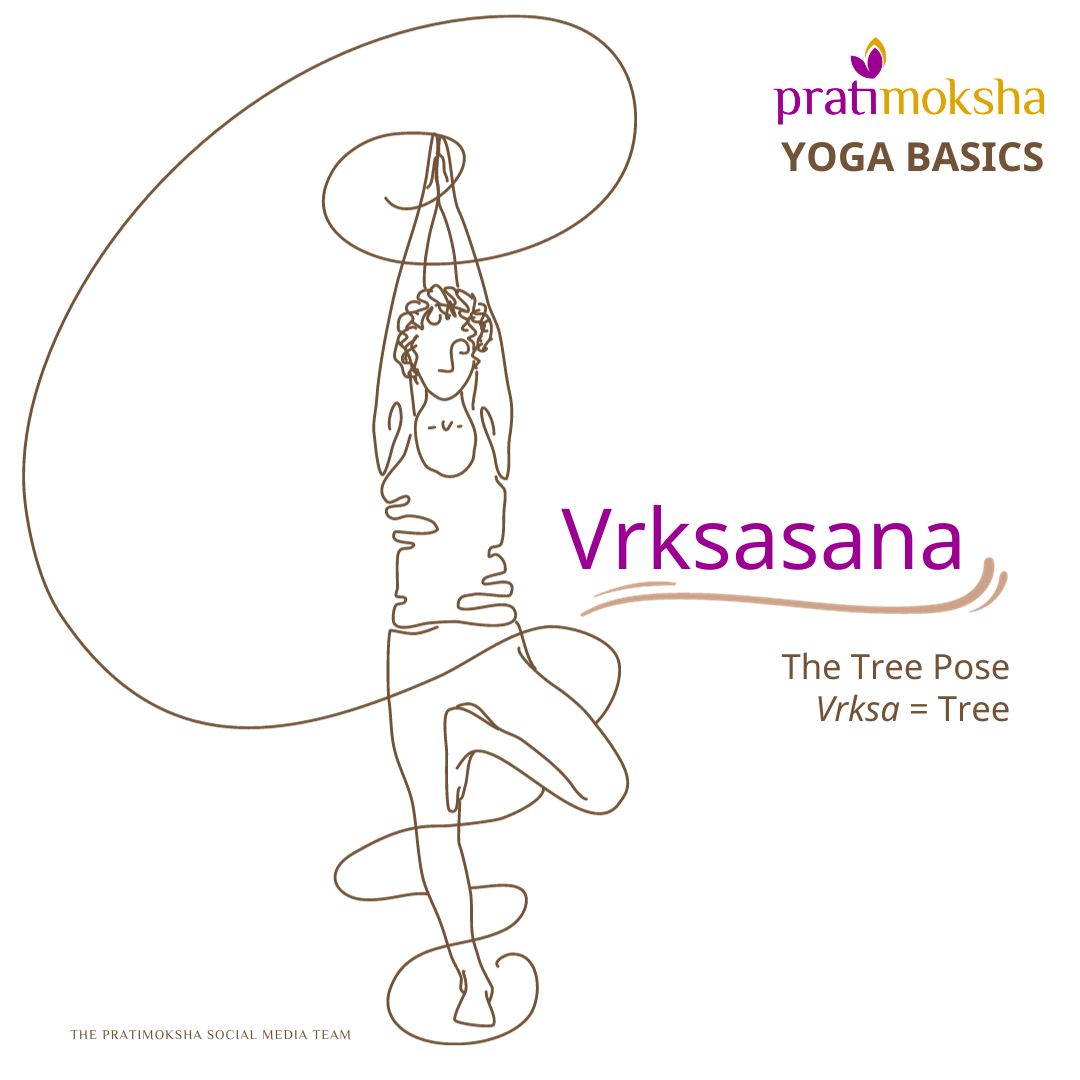Vrksasana or The Tree Pose
Vrks = Tree
Yoga sets great store on balance. In fact all of Yoga is an effort towards achieving balance. In action and thought.
As such Vrksasana serves as a barometer. As we assume the pose, we might get a sense of how far we are from achieving balance, as we teeter and fall.
Through consistent practice of the tree pose, we learn to lengthen the duration of the pose, and the balance we so crave will slowly come within our grasp.
This is the reason why Yoga instructors usually introduce Vrksasana early on in our Yoga journey. One might not be able to attain a perfect Vrksasana at this stage, but as we return to it time and again, we ourselves will marvel at how far along we have come.
So let’s see how it’s done.
HOW
Stand with your feet slightly apart.
Inhale deeply, exhale and tighten the core muscles.
Now shift your weight to the right leg and lift the left, placing the sole of the foot gently against the other leg, preferably against the right inner thigh. If you are beginner, place the foot gently against the shin below the knee. With practice you will want to raise the foot bringing it up against the inner thigh. However, never place the foot directly against the side of the knee as this might injure the knee.
As a beginner you might also want to stand next to a wall or hold on to the backrest of a chair.
Once in the pose, fold the palms of your hands in Anjali Mudra in front of your chest.
You could also raise your hands straight up as though reaching for the stars.
Hold, breathe gently.
As you become more comfortable in this posture, consider lowering your gaze and trying to find balance.
Now lower your leg and repeat with the other foot.
WHY?
A total body strengthener, the posture helps develop one’s focus and concentration. As we seek to balance ourselves by relying on just one leg, the posture helps in grounding us, even as we try and reach up for all the potential that’s open to us, if only we spread our arms and extend our hands to grasp it.
The Asana helps strengthen the legs, hips, buttocks and lower back and improve one’s posture. Make sure you do not tilt to one side while in the pose.
The challenge of the pose quite naturally lies in trying to balance on the single foot. This forces the practitioner to focus entirely on the pose, thus being in the moment, without being distracted by thoughts. Therefore, the pose is an excellent one to develop concentration.
Most Yoga poses are done with this kind of quiet focus on what the body is trying to achieve and is usually accompanied by well-timed inhalations and exhalations. This helps the yogi in his or her mediation practice. Through their Asana practice they develop the mental resilience to go inwards and reflect on a mantra or a thought or an affirmation, to sit in meditation for a long time totally absorbed in watching his or her thoughts and emotions, releasing the negative ones and embracing the positive.
(Caution: It’s a good rule of thumb to remember to leave around 2 hours between a meal and an Asana, as most postures require that your stomach is relatively empty. For those with knee pain, hip or lower back issues, the guidance of a professional Yoga instructor is essential.)
If you do have any doubts reach us through WhatsApp @00971-50-395-5613.




0 Comments